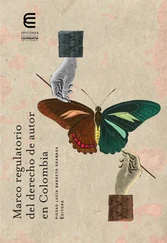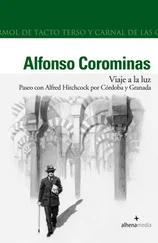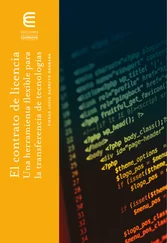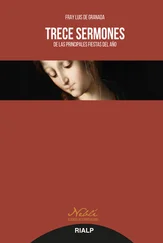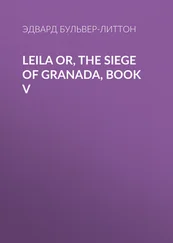A forthcoming study, based on a detailed study of the extensive Inquisition archives by Yale historian Stuart Schwartz and entitled “Each in His Own Law: Salvation, Repression and Popular Toleration in the Luso-Hispanic World, 1492–1700,” will reveal the extent to which the harsh and devastatingly destructive intolerance of 15th and 16th century Spain was neither understood nor shared by many of the “Old Christians” of Spain.
Ultimately, Ashour’s Granada is as touching a historical novel as it is not because she has got the history right and is able to interweave its interesting details into her narrative although she does just that, and readers will profit from and perhaps be amused by her judicious and accurate revelations about everything from the original terms of the capitulation of Granada (which granted religious and cultural freedoms to the Muslims, but were soon revoked) to the first items and people brought from the New World and paraded through the roadways of Andalucia. Rather, it works because it is written from the heart, and about the heart, and the novelist does not thus condescend to her characters, who are no more heroic nor less frail because of the historical stage on which they played out their lives. And we understand that there is much life to follow at the end, that because Granada was not about the stone city of its title but about a flesh-and-blood family who lived there, that history lies in the hands of their children: some born and others not yet, some who will be expelled in 1608 with the rest of the “Moriscos” and go to Arab and Ottoman lands (but always keep their iconic keys to homes in cities like Valencia); others who will remain in Spain, as first and second and third generation New Christians, intermarried, and ultimately seamlessly interwoven into Spanish culture; and yet others will emigrate to the New World, as one from the pivotal generation here already has, one of the young men whose coming of age from early adolescence through mature manhood provides the backbone of the narrative. The success of this novel’s marriage of the public and the personal is such that we finish the book convinced that the children of these characters will not only continue the family saga, but be the protagonists in the historical dramas yet to come, dramas that one generation after another, lead to us.
“Christopher Columbus and Queen Isabella of Spain Consummate Their Relationship, Santa Fe, January 1492,” was first published in the New Yorker of June 17, 1991. It was Rushdie’s first published work of fiction after the fatwa forced him into exile.
Albaicin is a suburb of Granada where the Muslims resided in the post-Reconquest. Its origin is most likely from the Arabic, al-Bayyazin, the falconers.
The Fuente Grande, known to the Muslims as Ainadamar, from the Arabic ‘ ayn al-dam’, the fountain of tears.
Abu ’Abdallah b. Muhammad, best known in the west as Boabdil, was the last Muslim ruler in Spain.
The Kaaba, a place of veneration at the Grand Mosque in Mecca.
The mother of Boabdil was commonly referred to as al-Hurra, the free woman.
The preserved tablet, al-lawh al-mahfuz, is believed in Islam to be the ultimate and complete word of God.
This is the literal translation of an Arabic expression that is the functional equivalent of two peas in a pod.”
Lisan al-Din Ibn al-Khatib (1313-74), vizier at the Nasrid Court, was an eminent bellettrist and historian, but was later accused of heresy, exiled to Fes, and murdered while in prison.
Ali Ibn Abi Talib, cousin and son-in-law of the Prophet Muhammad, is universally revered by Muslims.
The phantom of the lover is a popular motif in classical Arabic poetry, and also was believed to exist by pre-Islamic Arabians.
Kufic script is a style of Arabic calligraphy used especially for ornamentation.
Alpujarra or al-Basharrat in Arabic, a mountainous region east of Granada, was the site of fierce Arab resistance to the Spanish Reconquest.
Quran 105:1–5. This chapter, “The Elephants,” recounts the Battle of Abraha in 571 when the Christian viceroy of Sana’ marched against Mecca with elephants and a large army to destroy the Kaaba. See Ahmed Aly’s translation, Princeton, 1993.
The 27th of the month of Ramadan is the night on which, according to Quran: 97, the Quran was revealed to the Prophet Muhammad.
The first is Eid al-Fitr (the feast of the breaking of the fast), which marks the end of Ramadan, and the second is Eid al-Adha (the feast of the sacrifice), which falls forty days after the end of Ramadan when Muslims commemorate Abraham’s acceptance to sacrifice his son to God.
“Abu Qasim” is a nickname of the Prophet Muhammad.
The reference is to Quran 2 (The cow), verse 185:“as God wishes ease and not hardship for you.”
It was widely believed among the Muslims of Spain and North Africa at the time that the Ottoman Turks would defeat the Christians and bring al-Andalus back into Islamdom.
In the Muslim tradition, the body of the deceased is undressed, washed, and wrapped naked in a shroud.
Risalat Hayy Ibn Yaqzhan is a philosophical romance about a foundling who grows up alone on a deserted island, and, through the powers of an uncorrupted mind, attains the highest intellectual and spiritual levels. It was written by the Andalusian Muslim philosopher Muhammad Ibn ’Abd al-Malik Ibn Tufayl (d. 1185).
Abu ’Ali al-Husayn, b. ’Abdallah Ibn Sina (d. 1037), a philosopher of Persian origin who combined Aristotelian and neo-Platonic theories with Islamic mysticism. His Qanun is a voluminous medical encyclopedia.
Ibn al-Baytar was born in Malaga and died in 1248. His work al-Jami’ is a medical compendium.
Quran (Mary 19): 33–34.
Walahfrid Strabo, 807–849, was a German scholar who wrote on Biblical exegesis and early Christian liturgy. His evocation enhances the irony in that he wrote extensively on botany and the medicinal use of herbs and plants.




